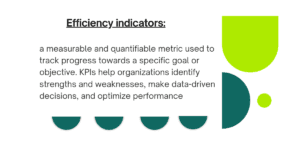6 Easy Financial ratios and formulas
Introduction:
Understanding a company’s financial ratios and formulas, health requires more than just looking at its balance sheet or income statement. Financial metrics play an important role in analyzing a company’s performance and provide insight beyond just numbers. In this article, we examine some key 6 easy financial ratios and formulas, decipher their meaning, and provide a formula to help analysts and investors make informed decisions.
I. Liquidity ratio: assessment of short-term profitability.
This is the 1st type in which we discuss 6 easy financial ratios and formulas.
1. Current ratio: Formula: Current ratio = Current assets / Current liabilities, Meaning: Measures a company’s ability to cover short-term liabilities with short-term assets. A ratio greater than 1 indicates good liquidity.
2. Quick Ratio (Acidic Test Ratio): Formula: Quick ratio = (Current assets – Inventories) / Current liabilities, Meaning: Similar to the current ratio, but excludes inventory and provides a more conservative measure of liquidity.
II. Profitability Metrics:
This is the 2nd type in which we discuss 6 easy financial ratios and formulas.
1. Net profit margin: Formula: Net Profit Margin = (Net Profit / Total Sales) *100 Meaning: Indicates the percentage of profit to sales. A higher profit margin indicates higher profitability.
2. Return on Equity (ROE): Formula: ROE = Net Profit / Equity , Meaning: Evaluates how effectively a company uses its capital to generate profits.
3. Return on Assets (ROA): Formula:* ROA = Net Profit / Average Total Assets , Meaning: Measures the efficiency of asset utilization to generate profits.
III. Efficiency indicators:
This is the 3rd type in which we discuss 6 easy financial ratios and formulas.
1. Inventory turnover rate: Formula: Inventory turnover = Cost of sales / Average inventory – Meaning: Indicates how often a company sells and replaces inventory within a period.
2. Accounts receivable turnover ratio: Formula: Accounts Receivable Turnover = Net Credit Turnover / Average Accounts Receivable, Meaning: Evaluates how quickly a company collects cash from its customers.
IV. Solvency ratio:
This is the 4th type in which we discuss 6 easy financial ratios and formulas.
1. Debt-equity ratio: Formula: Debt-Equity Ratio = Total Debt / Equity, Meaning: Compares the debt to equity ratio and indicates the degree of financial leverage.
2. Interest coverage ratio: Formula: Interest coverage ratio = Earnings before interest and tax (EBIT) / Interest expense, Meaning: measures a company’s ability to cover interest payments through operating income.
V. Market Key Figures of financial ratios and formulas:
This is the 5th type in which we discuss 6 easy financial ratios and formulas.
1. Price Earnings Ratio (PER): Formula: PER = Market price per share / Earnings per share, Meaning: Reflects investors’ expectations for future earnings growth.
2. Dividend yield: Formula: Dividend yield = Dividend per share / Market price per share, Meaning: Indicates the return on capital from dividends.
VI. Financial Ratios and Formulas Interpretation:
This is the 6th type in which we discuss 6 easy financial ratios and formulas.
1. Benchmark: Comparing ratios to industry averages and historical data provides context for your valuation.
2. Trends and Patterns: Analyzing trends over time provides insight into a company’s evolving financial performance.
3. Industry trends: Understanding industry-specific benchmarks ensures more accurate valuations.
Conclusion:
In the complex world of finance, financial ratios serve as a powerful tool that allows stakeholders to uncover the nuances of a company’s financial health. A deep understanding of these formulas and their impact enables analysts and investors to navigate complex financial reporting and make decisions based on comprehensive and insightful analysis.



